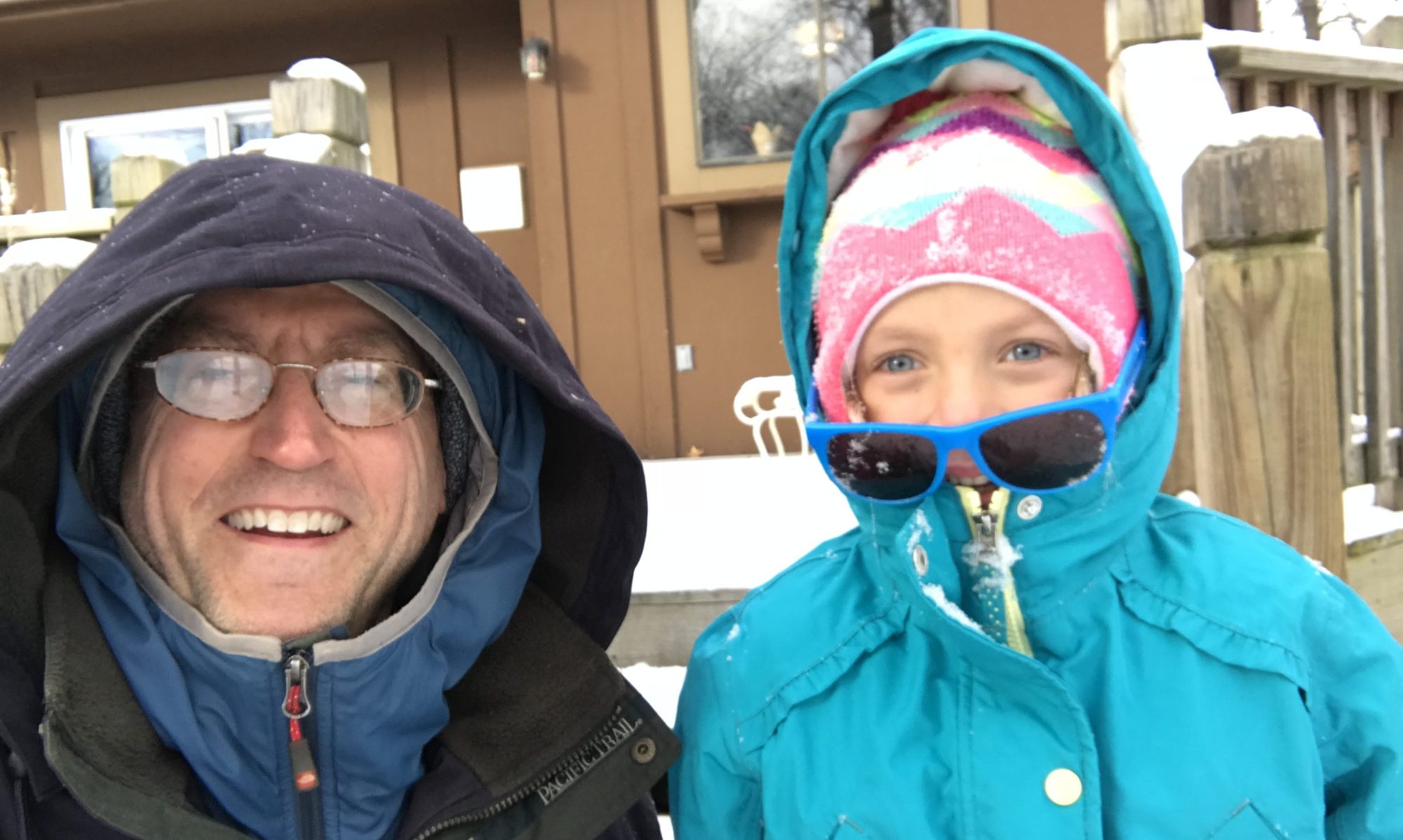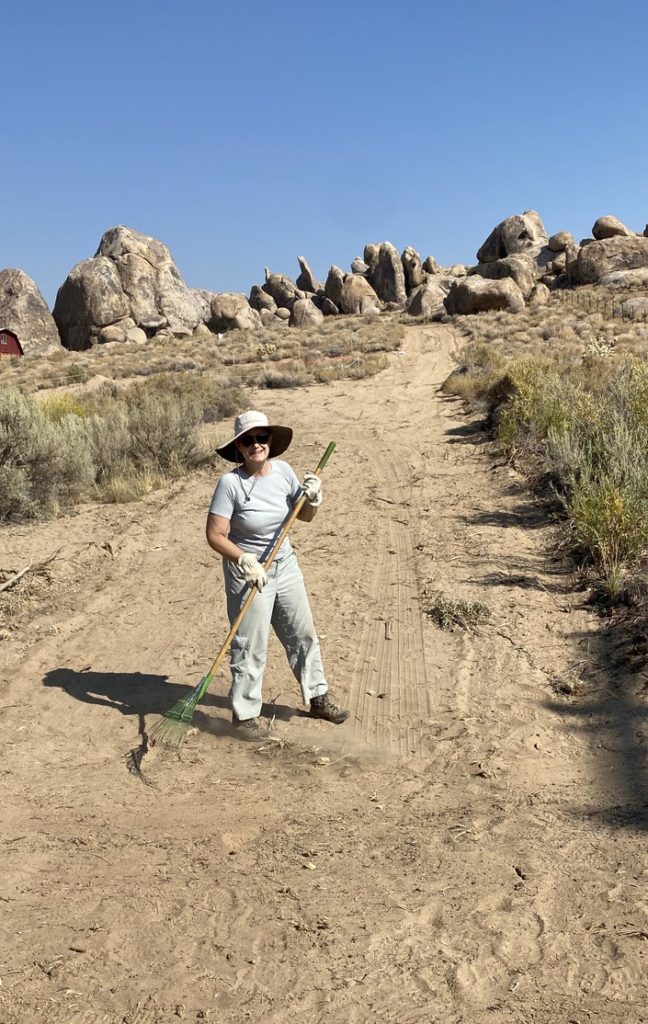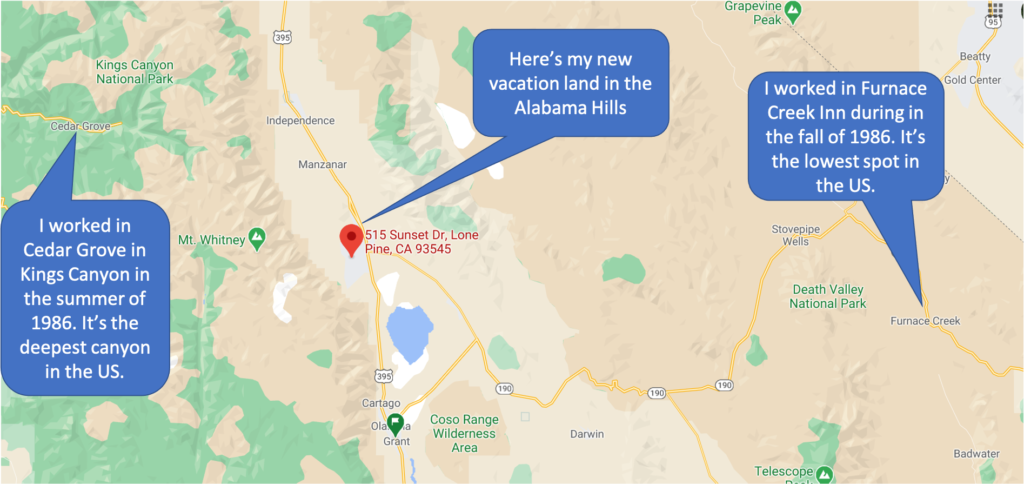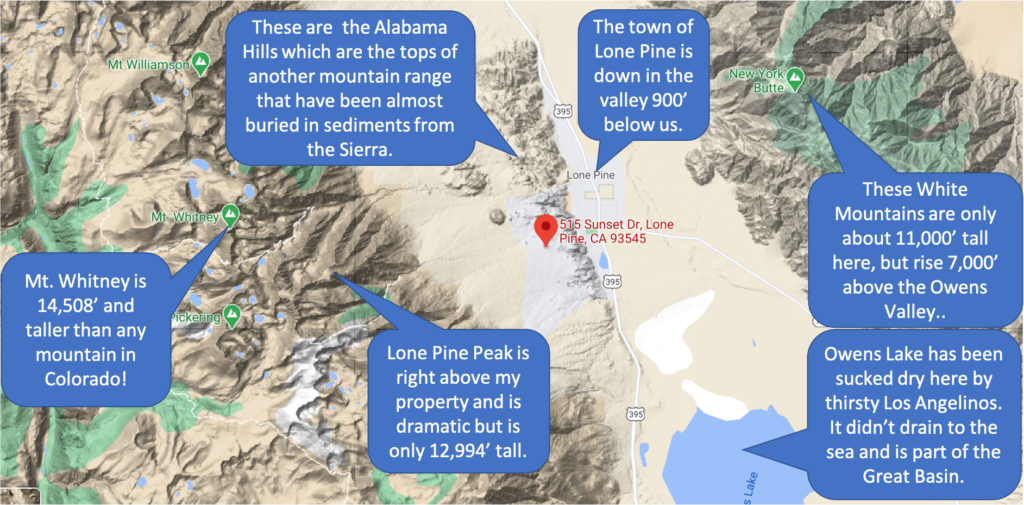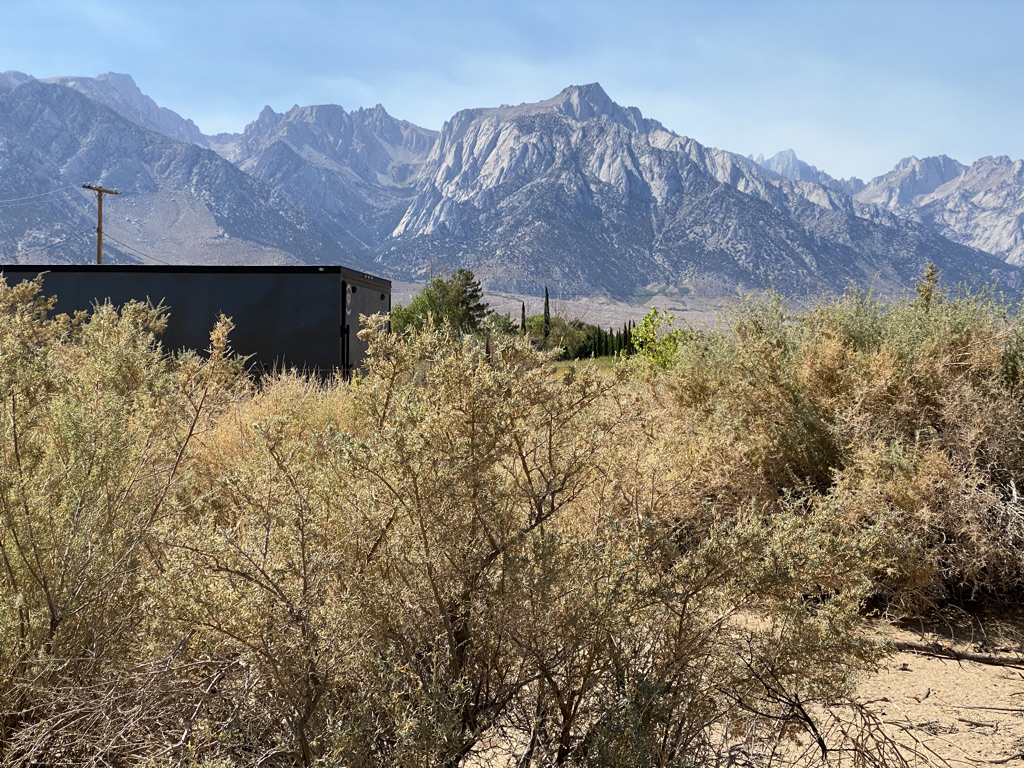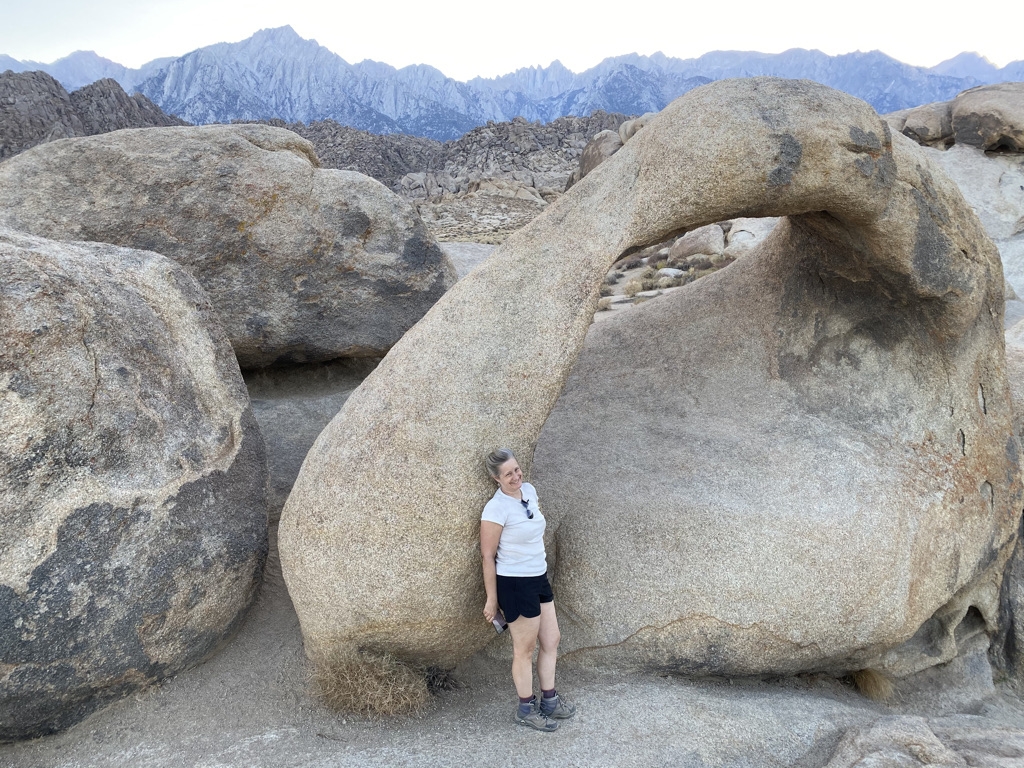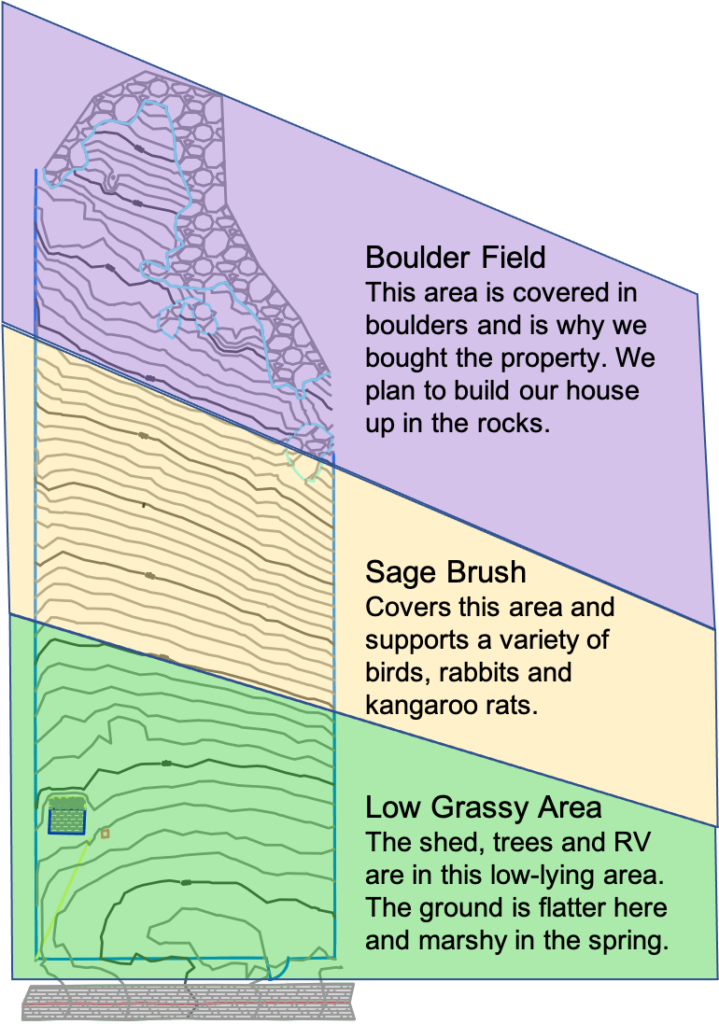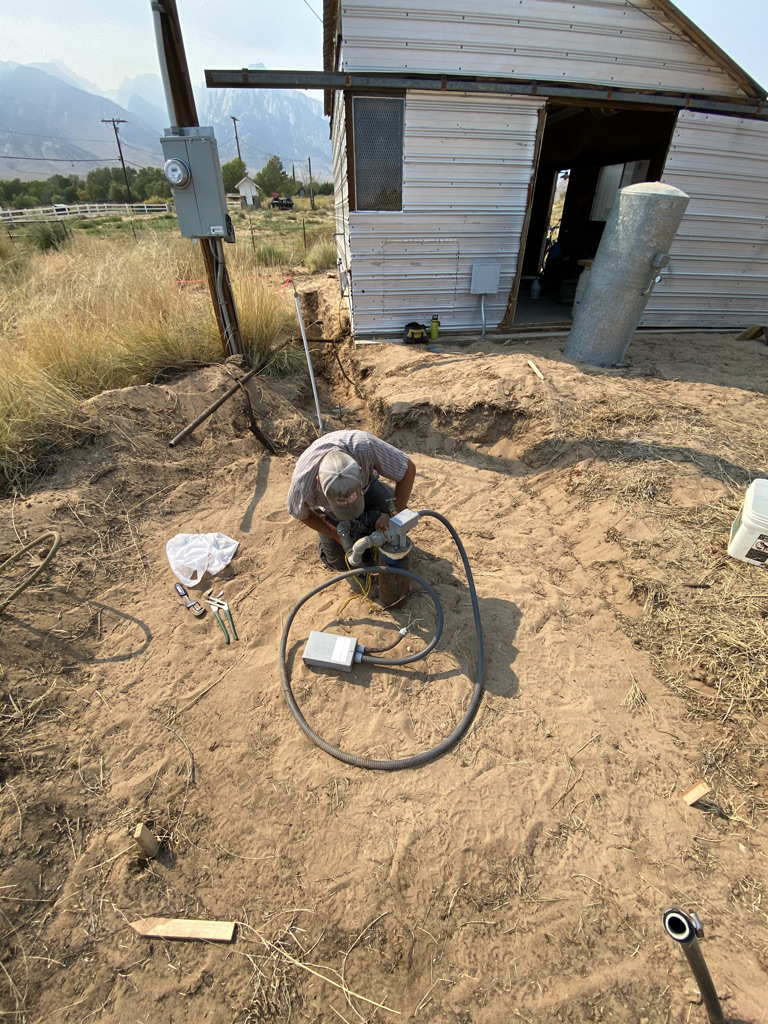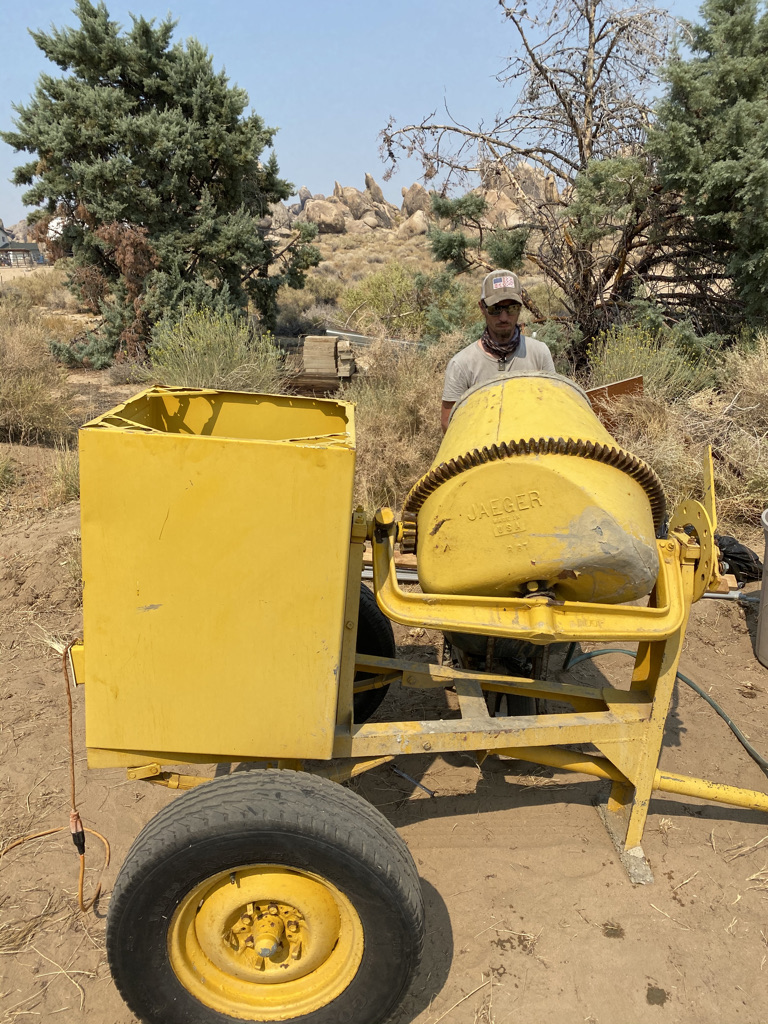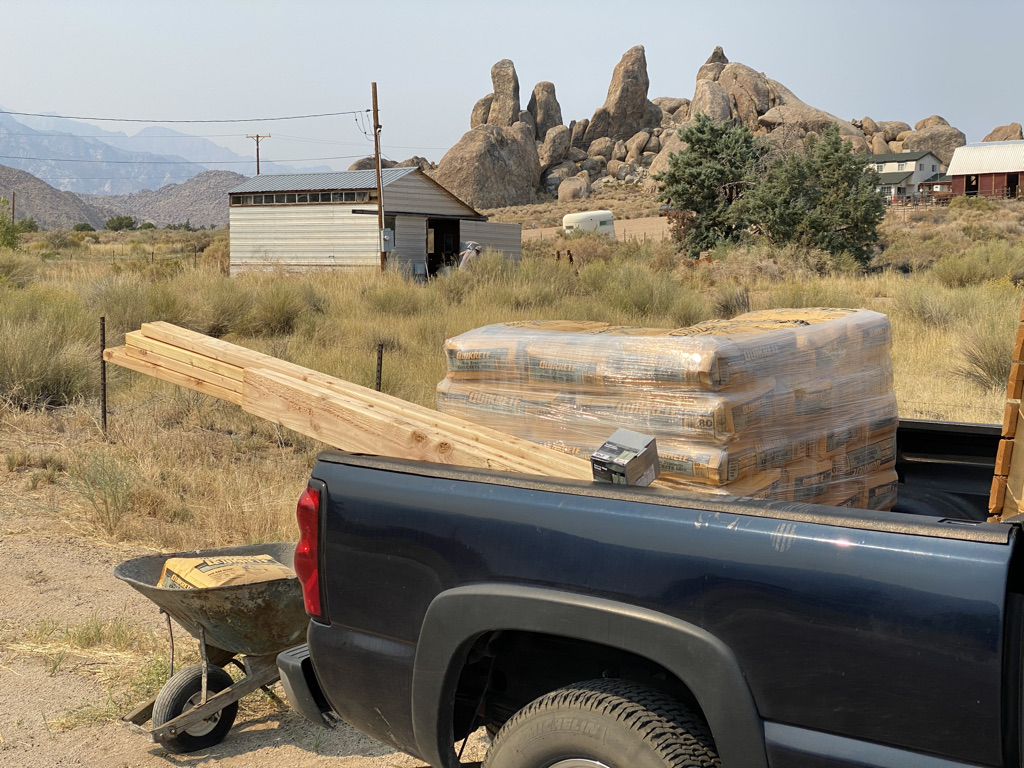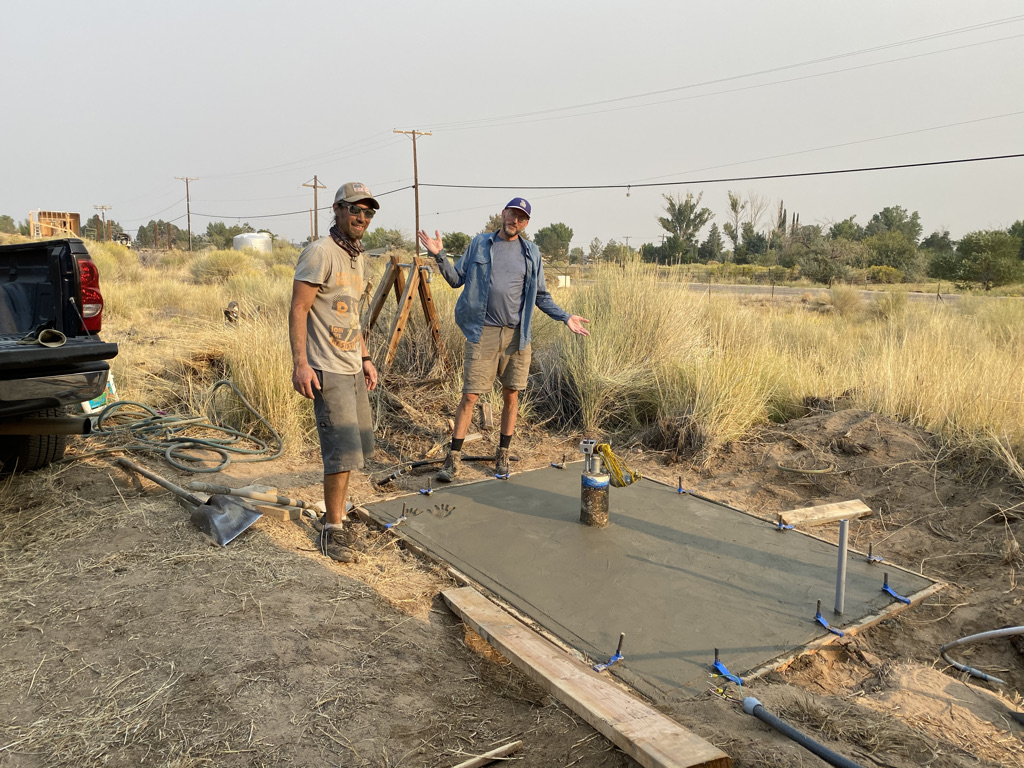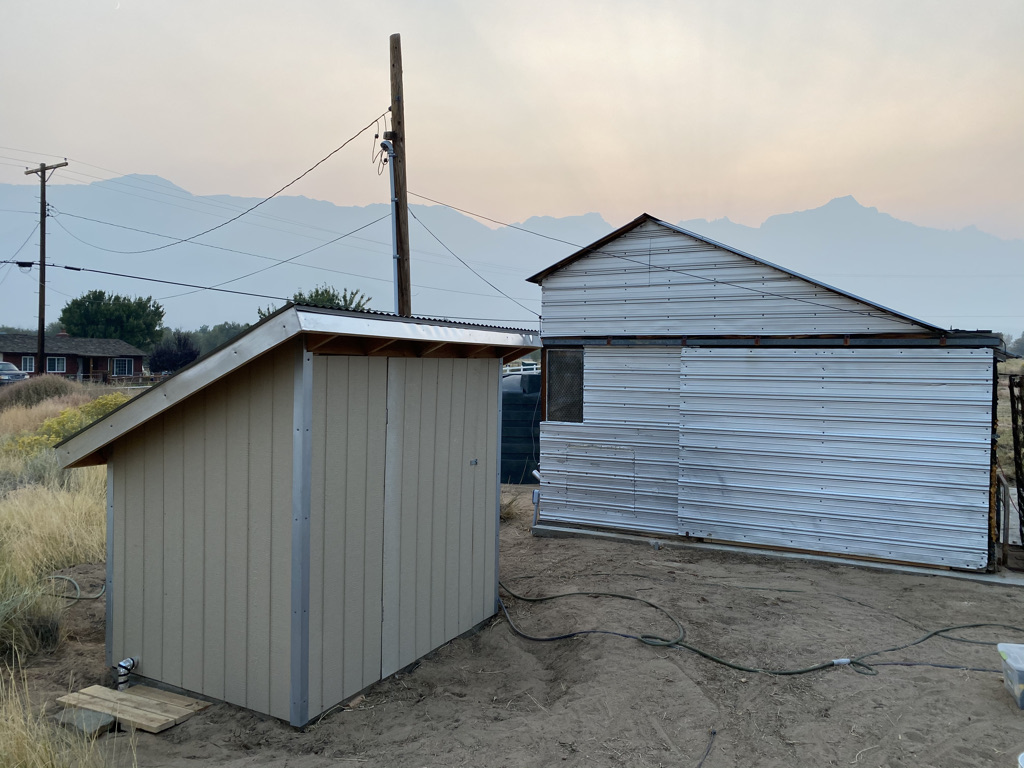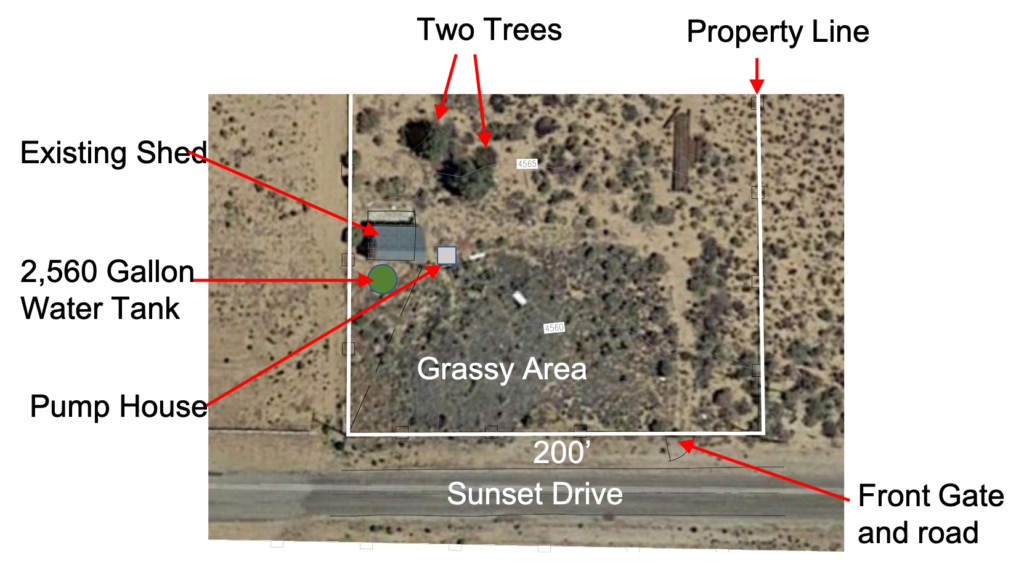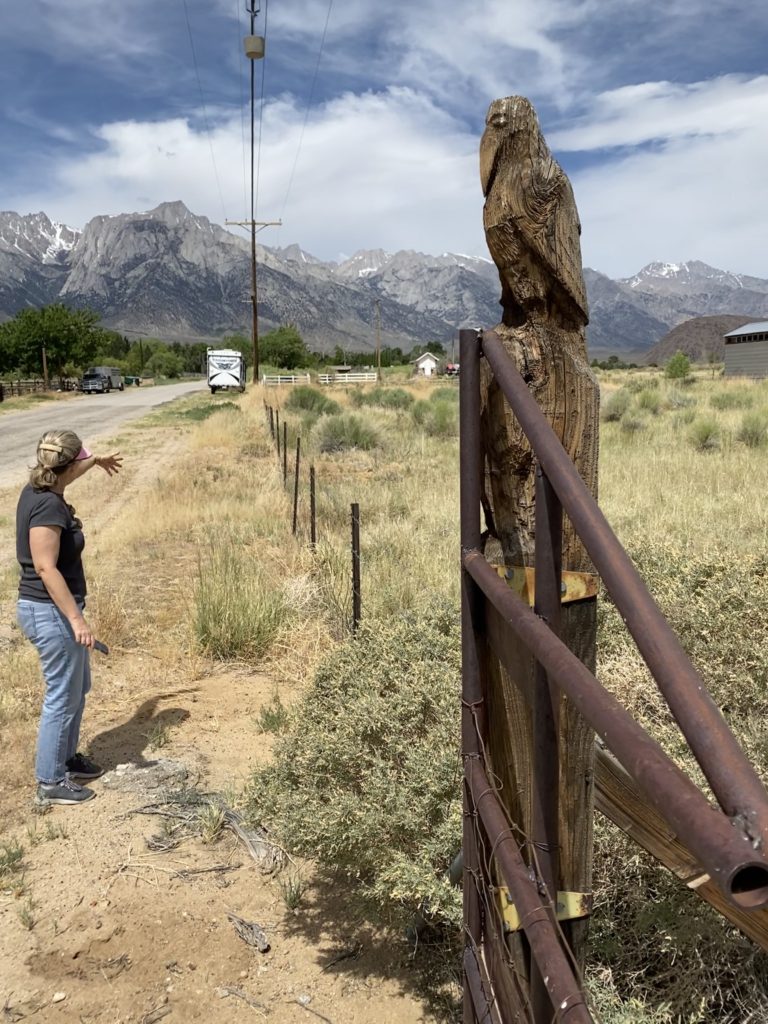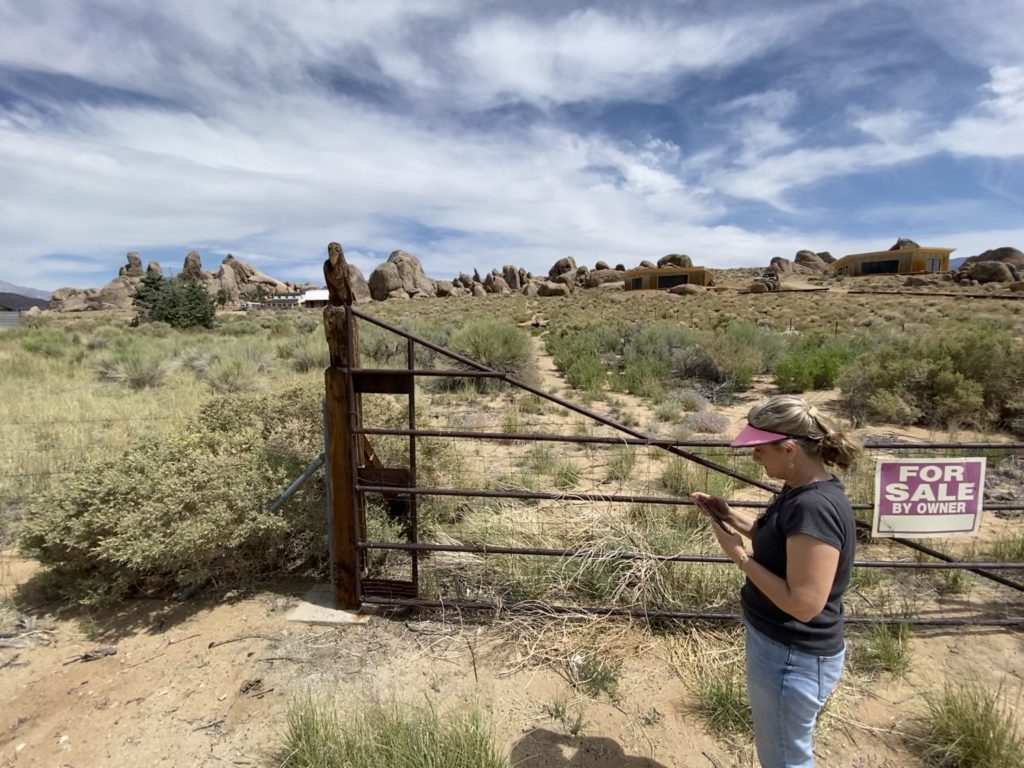Well, I got the water system working and have all the water I want. Now, I need a place to defecate. I have a toilet and gray water in the RV, but I needed a place to dump the waste from the RV and eventually our home. To keep the well water clean, I needed to build a septic system so that I don’t contaminate our water source. The septic tank needed to be at least 100’ away from the well to not contaminate it. I also wanted the septic tank to be downstream from the well. I didn’t want my shit to seep into the well, even from 100’.
I also wanted the septic tank to be below any structures that I built so that I wouldn’t need a pump to get the sewage to the septic tank and leach field. Amy made the drawing below and we ,submitted it with the application to Inyo County for the septic system. They approved it and it only cost $200.

Once we had the permit, the first thing to do was dig an 8′ deep hole that would make sure that we didn’t hit the water table. Some times of the year after big rains, the water table is about at ground level near the bottom of the property, but we were placing the septic tank at least 10′ uphill as shown in this survey.
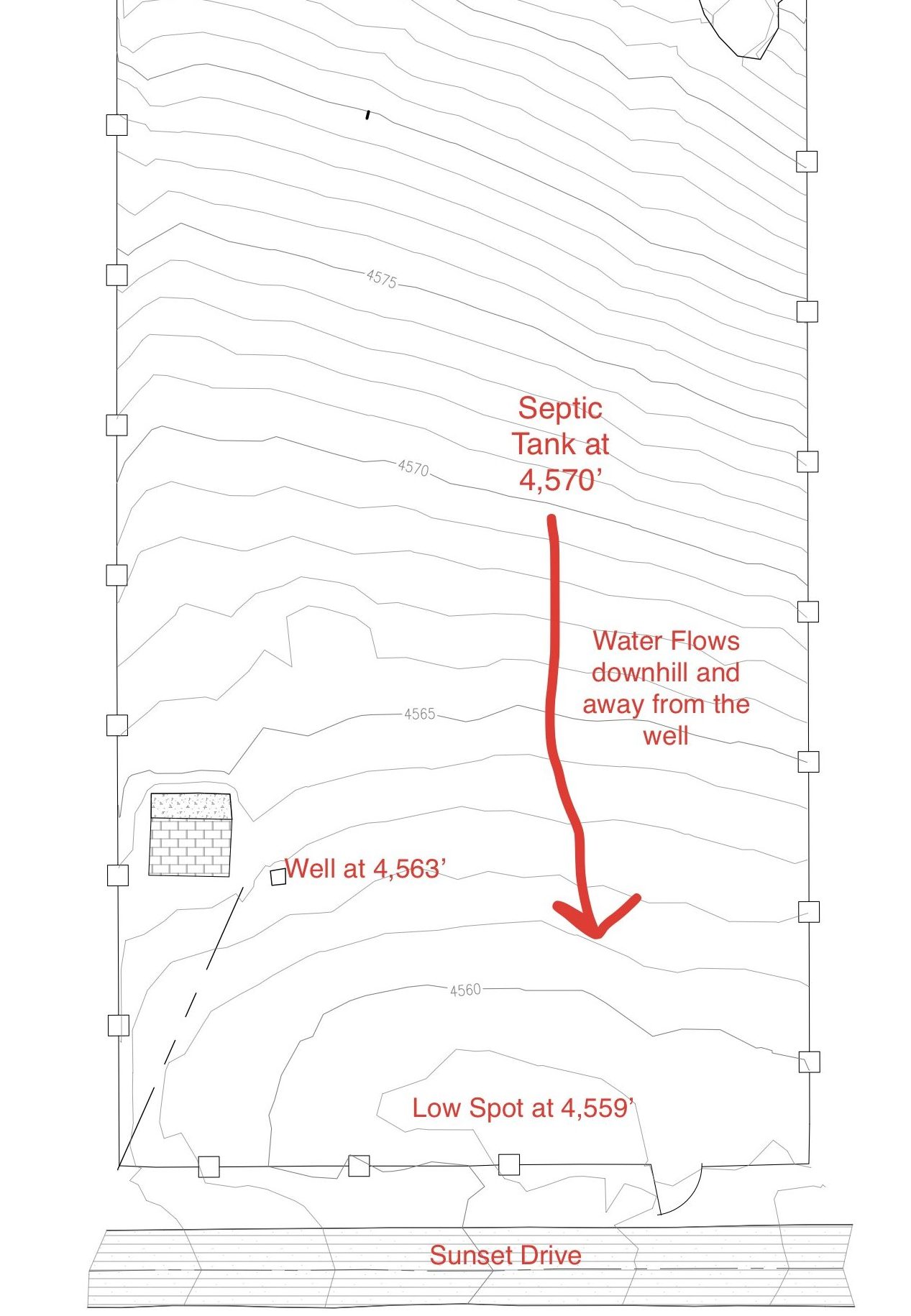
We called Cricket and he scraped the road out of the sage brush before he could dig the hole. This video shows that and a little more. One downer about this video is that it shows how thick the smoke was. We couldn’t even see the mountains for many days in September.
Cricket hit some hard sandstone at 7′ and he thought the inspector Jerry Oser would pass it anyway since we weren’t burying anything that deep. I called Jerry and he came out the next day to inspect it. He looked at it and said dig away. Cricket got right to work digging the land up to put in the septic tank and the leach field. It was all sand, so it was easy digging with the backhoe. We didn’t run into any boulders and the only challenge was getting it flat. Cricket had a laser that helped us dig to true.
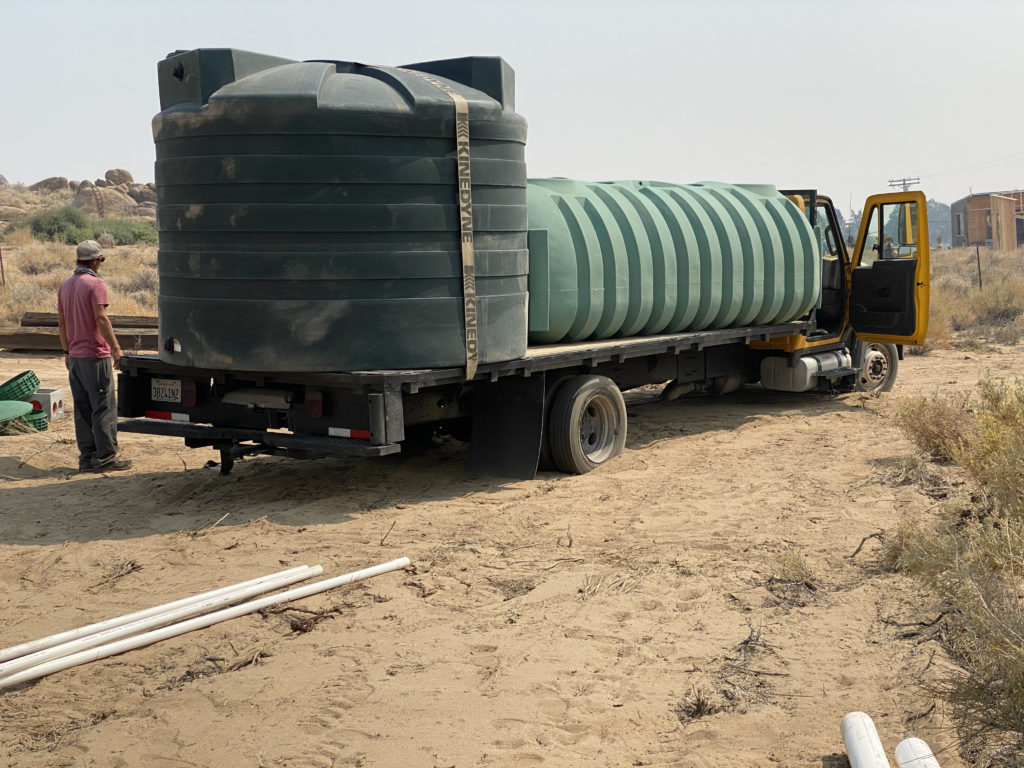
With the tank at hand, Cricket dug the pit for the septic tank. Here’s a time elapse video of him placing the tank in the hole.
With the tank in place, we had to dig out the leach field and place the pipes and infiltrators in the ground. An infiltrator is basically a plastic arch that is 54″ long. The infiltrators are arranged to form four thirty-foot-long chambers. The sewage flows into one end of the chamber and eventually flow down the length of the chamber. Based on our percolation test, they said we needed 120′ of infiltrators, so I bought four rows of 30′ of infiltrators. The drawing below shows how the sewage pours into each chamber on the left and flow 30′ to the right. I think that it will sink into the sand before flowing more than a few feet away. Thus, most of the leach field will not be used since it will sink into the sand after a few feet.
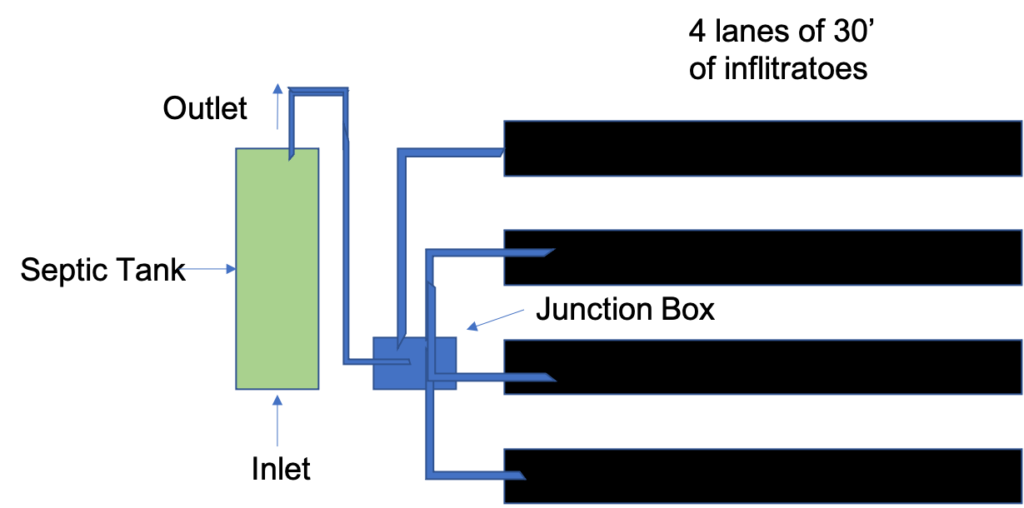
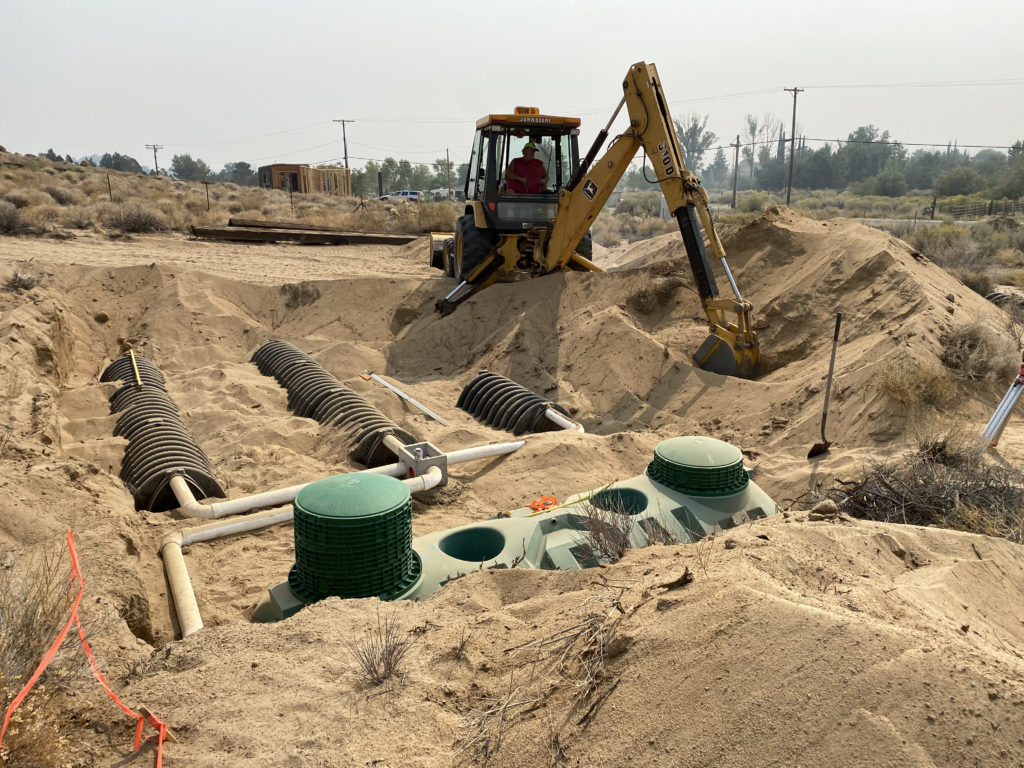
Cricket stayed in the backhoe while I placed each 54″ infiltrator into the leach field. It was hot and dusty work, but I saved a lot of money doing it with Cricket. Cricket does a lot of work like this and knew what he was doing. I think it took us about 8 hours to run all the leach lines. It ended up looking like this at the end of the day after I hosed the dust off the lines.
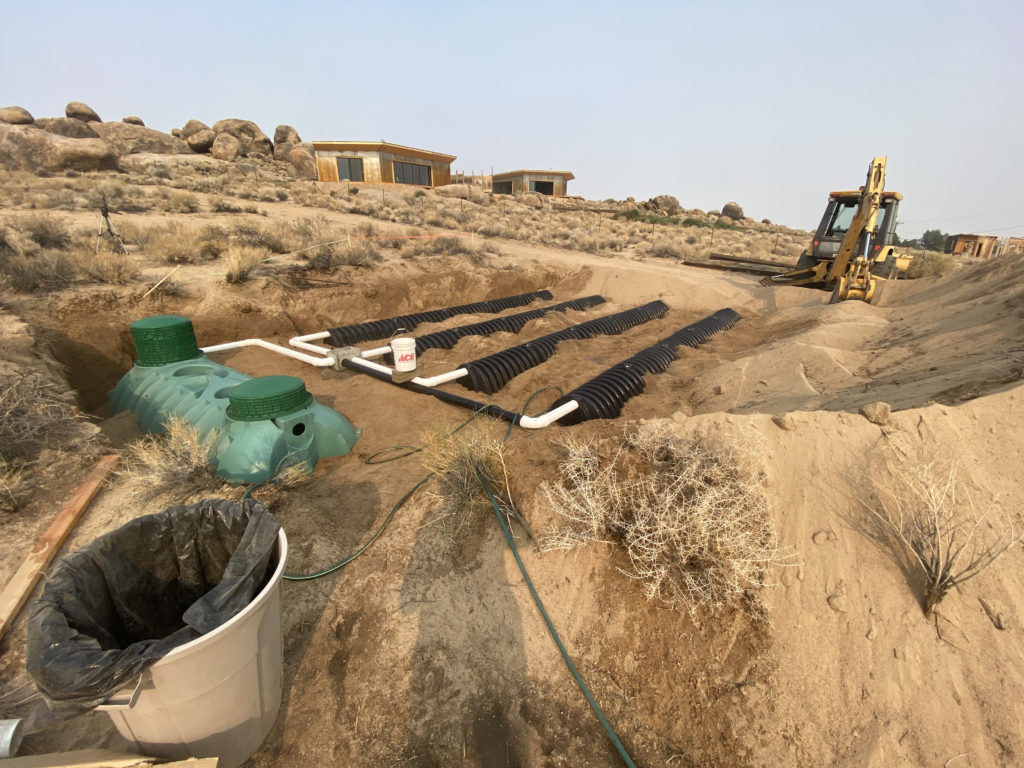
We called Jerry and he came out and approved it with little inspection. Cricket backfilled the leach field with all the sand.
The cost of the septic system was something like this:
Septic tank – $1600
Infiltrators – $1,127
Septic tank lids – $94
Extension caps – $180
Junction Box – $89
PVC Pipe- $160
Miscellaneous and Delivery – $750
Labor – $1,000
Total – $5,000
It only took Cricket and I about 3 days to install the system and cover it up. It’s not bad for a modern-day shit hole.
